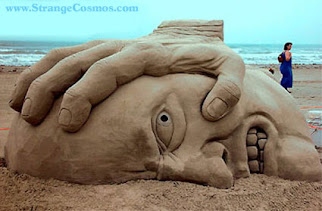Tanchoi sarees are a popular type of saree of North India. Like the banarasi sarees, these sarees are also produced by Varanasi weavers. These sarees are not heavy like Banarasi sarees but they are equally beautiful with interesting weaving patterns and can be worn for all types of occasion.
Tanchoi Weaving Pattern
Tanchoi is an elaborate and comprehensive weaving technique practiced in parts of Northern India to create beautiful Tanchoi textiles. This art originated in China and was brought to India by three brothers with the last name ‘choi.’ The technique therefore came to be known as ‘Tanchoi’, which literally means ‘three chois’ (tan – three, Choi – brothers). They introduced the art to the Indian weavers in Surat (Gujarat) and later the Varanasi weavers started making less expensive versions. Since then the amalgamation of Chinese technique with Indian style of weaving was created to form the Indianised version of Tanchoi sarees.
The Saree
The tanchoi weavers initially wove yard age and sarees, which were mostly used by the Parsi community. But today, Tanchoi has remarkably gained popularity throughout India. Employing a technique similar to that of brocade, weavers of Benaras make sarees using colorful extra weft silk yarn for their unique patterns. Tanchoi saree resembles a fine miniature. In tanchoi sarees, the designs are always floral with interspersing of birds. Figures of flying birds, paired cocks amidst floral sprays are worked on them. The usual ground is bright blue, purple, green or red with areas patterned in tabby weave. Sometimes the pallu is done more solidly with peacocks, baskets or bunches of flowers or hunting scenes. Tanchoi silk sarees are also in dazzling floral, geometrical and paisley designs. Some tanchoi sarees have a rich gold border and two gold bands on the pallav. The more exclusive ones have gold checks with lotus roundels all over which are known as butis.
Tanchoi Weaving Pattern
Tanchoi is an elaborate and comprehensive weaving technique practiced in parts of Northern India to create beautiful Tanchoi textiles. This art originated in China and was brought to India by three brothers with the last name ‘choi.’ The technique therefore came to be known as ‘Tanchoi’, which literally means ‘three chois’ (tan – three, Choi – brothers). They introduced the art to the Indian weavers in Surat (Gujarat) and later the Varanasi weavers started making less expensive versions. Since then the amalgamation of Chinese technique with Indian style of weaving was created to form the Indianised version of Tanchoi sarees.
The Saree
The tanchoi weavers initially wove yard age and sarees, which were mostly used by the Parsi community. But today, Tanchoi has remarkably gained popularity throughout India. Employing a technique similar to that of brocade, weavers of Benaras make sarees using colorful extra weft silk yarn for their unique patterns. Tanchoi saree resembles a fine miniature. In tanchoi sarees, the designs are always floral with interspersing of birds. Figures of flying birds, paired cocks amidst floral sprays are worked on them. The usual ground is bright blue, purple, green or red with areas patterned in tabby weave. Sometimes the pallu is done more solidly with peacocks, baskets or bunches of flowers or hunting scenes. Tanchoi silk sarees are also in dazzling floral, geometrical and paisley designs. Some tanchoi sarees have a rich gold border and two gold bands on the pallav. The more exclusive ones have gold checks with lotus roundels all over which are known as butis.
























